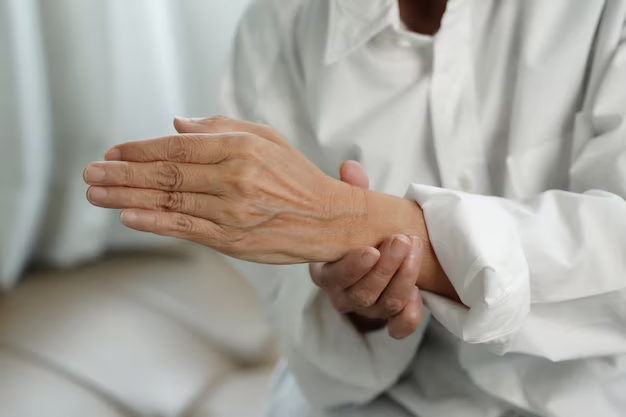Is Osteoarthritis Hereditary? Understanding the Genetic Links and Influencing Factors
Navigating the complexities of osteoarthritis can be daunting, especially when trying to understand if it might be hereditary. With family members sharing tales of joint pain and arthritis, you may wonder if your DNA predicts a similar fate. Here, we explore the nuances of osteoarthritis, its hereditary connections, and other influencing factors, offering a comprehensive view to help you better grasp this common but intricate condition.
Understanding Osteoarthritis
What is Osteoarthritis?
Osteoarthritis (OA) is the most prevalent form of arthritis, characterized by the progressive degeneration of joint cartilage and underlying bones. This deterioration can lead to pain, swelling, stiffness, and reduced flexibility. It commonly affects joints in the knees, hips, hands, and spine.
Causes of Osteoarthritis
Osteoarthritis is typically described as a wear-and-tear disease. However, it's not simply a result of aging. A combination of factors, including lifestyle, physical activity levels, and body weight, can significantly influence its onset and progression.
Hereditary Factors in Osteoarthritis
Is Arthritis Hereditary?
While arthritis is a broad term with many forms, research indicates that genetics can play a role in the development of osteoarthritis. Family history can indeed influence your risk, although it's not the sole determinant.
Genetic Predisposition
Certain genes have been linked to an increased risk of developing osteoarthritis. These genes may affect cartilage structure and repair, making joint structures more susceptible to damage. However, having a genetic predisposition does not guarantee you will develop osteoarthritis; it merely indicates a higher likelihood.
Interplay of Genetics and Environment
Role of Lifestyle and Environment
Genetics is only one part of the puzzle. Environmental factors, such as your level of physical activity and occupation, can exacerbate or mitigate genetically predisposed risks. For example, repetitive stress from certain jobs can increase the risk, while regular, moderate exercise can strengthen joints and reduce injury risks.
Weight and Osteoarthritis
Excess body weight significantly stresses joints, particularly weight-bearing ones like knees and hips. While your genes might affect your weight and metabolism, lifestyle choices—like diet and exercise—play a crucial role in managing this risk factor.
Key Factors in Osteoarthritis Development
Age and Gender
While age is a strong risk factor, osteoarthritis isn't exclusive to older adults. Younger individuals can also develop the condition, particularly those with joint injuries or genetic risk factors. Additionally, women are more prone to OA, possibly due to hormonal differences that affect joint structure and function.
Previous Joint Injuries
Injuries that cause joint instability or cartilage damage can increase the risk of osteoarthritis later in life. Athletes, particularly those involved in high-impact sports, need to be especially mindful of protecting their joints.
Occupation
Jobs that require repetitive motions or heavy lifting can increase OA risk due to continual joint stress. Ergonomic improvements in the workplace can help lessen these risks significantly.
Managing Osteoarthritis Risks
Lifestyle Modifications
- Maintain a Healthy Weight: Reducing stress on joints can slow disease progression.
- Regular Exercise: Low-impact activities like swimming and cycling can improve joint function and reduce pain.
- Balanced Diet: Consuming anti-inflammatory foods, rich in omega-3 fatty acids, can support joint health.
Understanding Your Options
Awareness and education about osteoarthritis, whether hereditary or due to lifestyle, are vital in managing and potentially delaying its onset.
Practical Steps and Key Takeaways
Here’s a quick guide to help you approach osteoarthritis:
- 🏋️ Stay Active: Regular, low-impact exercise not only strengthens muscles around joints but also can help maintain flexibility.
- 🍴 Healthy Diet: Incorporate anti-inflammatory foods, reduce sugar and processed foods.
- ⚖️ Manage Your Weight: Aim for a healthy weight to lessen joint stress.
- 🧬 Family History: Understand your family's medical history to be proactive in lifestyle choices.
- 👨⚕️ Consult Healthcare Providers: Seek professional advice for personalized risk management strategies.
Insights into the Future
While the genetic factors of osteoarthritis indicate an increased likelihood, they aren't destiny. Understanding and mitigating environmental and lifestyle risks remain pivotal. By prioritizing proactive health measures, you're better equipped to manage or prevent the onset of osteoarthritis, empowering you to maintain an active and fulfilling life.
Combining insights from your genetic background with a well-rounded approach to health can significantly impact long-term joint health. Always consult healthcare professionals for individualized guidance, and stay informed about the latest research to manage osteoarthritis effectively.

Related Topics
- a Septic Arthritis
- Are Bananas Bad For Arthritis
- Are Tomatoes Bad For Arthritis
- Can An Inflamed Nerve Cause Arthritis
- Can An Inflamed Nerve Cause Arthritis In Dogs
- Can An x Ray Show Arthritis
- Can Arthritis Be Cured
- Can Arthritis Be Reversed
- Can Arthritis Become Septic After Infection From Injection
- Can Arthritis Cause Numbness